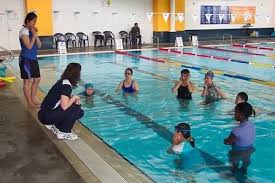Every Australian knows the heat. And when dry spells hit hard, water isn’t just a convenience—it’s a lifeline. That’s why Level 2 water restrictions in New South Wales aren’t just policy—they’re a public responsibility.
But here’s the twist: water safety isn’t only about dams and droughts. It’s also about knowing what to do when water surrounds you—at beaches, pools, rivers, and bathtubs. That’s where a water safety course plays an unexpected but essential role.
Let’s break down both angles: how Level 2 water restrictions affect daily life, and why improving water safety skills should go hand in hand.
H2: Understanding Level 2 Water Restrictions in NSW
Level 2 restrictions kick in when water storage drops to critically low levels. These measures aim to stretch every drop across homes, parks, and industries.
Here’s what’s restricted under Level 2 in NSW:
- No hoses without a trigger nozzle. You can only use them for 15 minutes before 10am or after 4pm.
- No sprinklers or unattended watering. Manual watering only, during permitted hours.
- No hosing hard surfaces. That includes driveways and paths—use a broom or a mop.
- Pools need permits. Filling new or renovated pools over 500 litres requires an exemption.
- Commercial use is restricted. Businesses like nurseries and car washes must follow tight usage rules or switch to recycled water.
These restrictions help stabilise supply, but they also change how we interact with water. Less availability increases the need for awareness and smarter decisions—especially around safety.
H2: Why Every Australian Needs a Water Safety Course
We’re a nation wrapped in coastlines and swimming culture. But sadly, drowning is still one of the leading causes of preventable death in children under five.
That’s why a water safety course is more than a certificate—it’s a life skill.
Here’s what the best programs teach:
- Recognising dangers in different environments. Beaches, rivers, pools, bathtubs—each has its own risks.
- Supervision principles. Learn how to actively watch and respond, not just be nearby.
- Rescue techniques. Simple strategies like reach, throw, or go with equipment can prevent tragedy.
- CPR and first response. Timely action can make the difference between life and death.
- Rules for all ages. Courses cater to parents, teachers, childcare workers, and community leaders.
Whether you’re a parent, grandparent, teacher, or someone who just loves the water, a water safety course helps you stay ready—not reactive.
H2: The Hidden Connection: Droughts and Drowning Risk
It seems backwards, doesn’t it? Less water, yet more risk.
But droughts often force changes in behaviour:
- Families travel farther to swim—rivers and beaches instead of local pools.
- Supervised venues close or cut hours to save water.
- Natural bodies of water become unpredictable—exposing debris, strong currents, or drop-offs.
Combine this with people who are less confident in their swimming or rescue ability, and the dangers multiply.
That’s why public health authorities recommend enrolling in a water safety course, especially during periods of heightened water restrictions. It’s a proactive step that supports both environmental conservation and community wellbeing.
H3: How to Choose the Right Water Safety Course
Not all programs are created equal. When looking for a course, check for:
- National recognition and standards compliance.
- Age-appropriate formats—some are family-friendly, others specialise in early learning or school-aged children.
- Hands-on training opportunities, not just theory.
- Ongoing access to resources like digital updates or refresher sessions.
You want more than a few handouts and a quick quiz. You want experience, practical skills, and confidence. Enrol in a water safety course that goes the distance.
H3: Making Water Safety Part of Everyday Life
Restrictions or not, safety starts with routine. Here are a few everyday habits that protect lives:
- Empty paddling pools and buckets when not in use.
- Teach children to ask before entering water.
- Have rescue items nearby (a towel, pole, or floatation device).
- Refresh your training annually.
These actions are simple but powerful—especially when backed by structured learning through a water safety course.
H2: A Shared Responsibility—Conservation and Safety
Level 2 water restrictions ask us to cut usage. But they also offer a prompt: to think differently about water as a whole. This includes how we use it, respect it, and stay safe around it.
You can’t control the rain. But you can control how ready you are to respond in an emergency—and how wisely you conserve the water we do have.
Take the next step. Invest in knowledge. Enrol in a water safety course. Then bring that knowledge into your home, school, or community group.
External Source
For a full breakdown of current restrictions, see the Level 2 water rules in NSW.
Final Thoughts
Australia is a country shaped by water—from the coast to the outback. We’re lucky to enjoy its beauty, but we must also respect its power. That starts with using water wisely under restrictions—and understanding how to stay safe around it.
Whether you’re facing a hot summer or preparing your school program, a water safety course gives you the tools that matter most.

